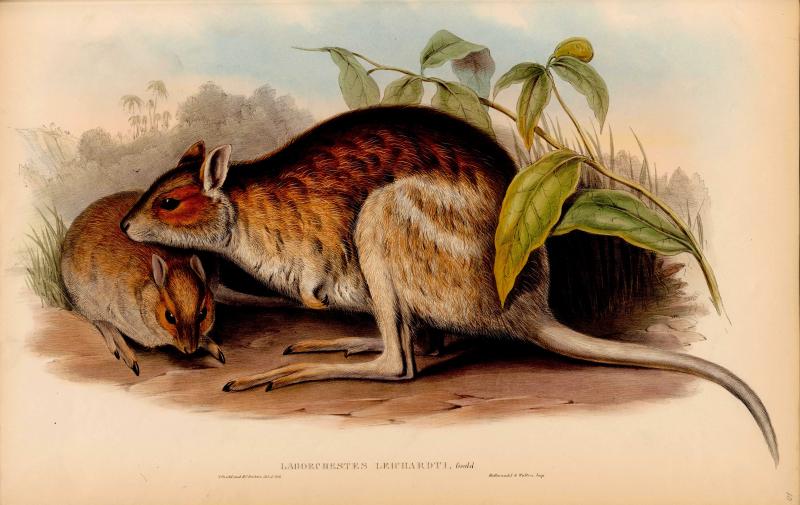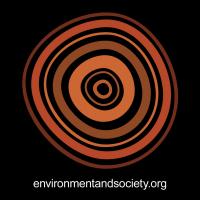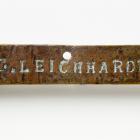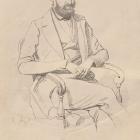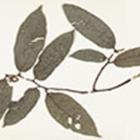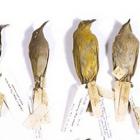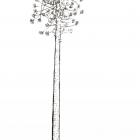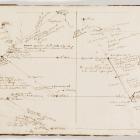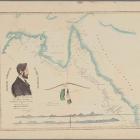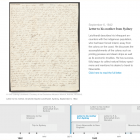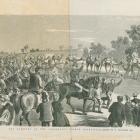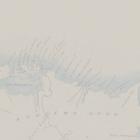The zoological collections of the Port Essington Expedition
Ludwig Leichhardt had hoped to become a member of an expedition sponsored by the colonial government that was to investigate an overland route from Sydney to the harbor town of Port Essington on the northern coast. When this expedition was delayed, he sought funding himself, gathered a team of men, and set out in October 1844 from Moreton Bay. One of Leichhardt’s companions was John Gilbert, an Englishman who was collecting zoological specimens for John Gould, curator of the Zoological Society of London. Gould, accompanied by Gilbert as his assistant, had himself traveled through Australia from 1838 to 1840; after his return to England he published the first volumes of the magnificently illustrated Birds of Australia, which cemented his reputation as the greatest authority on the subject. In order to expand his collection, Gould sent his assistant to Australia in 1842, where Gilbert joined Leichhardt’s expedition of his own initiative shortly before it departed.

In his last diary entry before his death, John Gilbert reported on an encounter with some Aborigines and speculates about their campsite. It may have been a place of religious significance; other sources suggest that members of the expedition had harassed the women.
In his last diary entry before his death, John Gilbert reported on an encounter with some Aborigines and speculates about their campsite. It may have been a place of religious significance; other sources suggest that members of the expedition had harassed the women.
Last entry in John Gilbert’s diary. Northeastern Australia, 28 June 1845.
Courtesy of The State Library of New South Wales, Sydney.
When Aborigines attacked the campsite near the Gulf of Carpentaria on 28 June 1845, Gilbert was killed by a spear; two more expedition members were wounded. Gilbert was considered an insightful observer of the indigenous Australians, and his own notes suggest that the expedition members had violated some law, for which the Aborigines sought retribution by attacking.
After Gilbert’s death, Leichhardt saved and transported his specimens despite the difficult travel conditions—even after the loss of several pack animals forced him to abandon his own botanical and geological specimens. The relationship between Leichhardt and Gilbert was tense at times. One of Gilbert’s diary entries indicates a growing competition between the two men for natural history specimens, with Leichhardt claiming the first example of any species for himself—with the exception of birds. Later, Leichhardt felt that he had been betrayed by Gilbert, as he wrote to his brother-in-law: “Mr. Gilbert sought to cheat me in manifold ways and I would probably not have been able to enjoy many of the fruits of my labor during this expedition had he remained alive. I found out about his plans after his death” (letter to F. A. Schmalfuß, 24 January 1846).
After the expedition, Leichhardt sent Gilbert’s diary and bird specimens to England for the attention of Gould. The mammals went to the Australian Museum in Sydney, which lent them to Gould for identification purposes. The collection included a small wallaby that Gould identified as a new species and gave the name Lagorchestes leichardti in honor of the expedition leader—although Leichhardt did not possess a gun and so could not have collected it himself—and it was listed as such in his lavishly illustrated book on Australian mammals. The bird collection was a disappointment to Gould, for it included few new species. However, Gilbert’s diary and Leichhardt’s travel report provided him with much information about their distribution, which he used frequently in his own publications.
Clemency Fisher, Curator of Vertebrate Zoology, National Museums Liverpool, comments:
I have been working on John Gilbert’s diary from Ludwig Leichhardt’s first expedition (1844–1845) for many years, and have identified a number of specimens of birds he and John Murphy, another member of the expedition, collected on the journey. After examining the specimens and publishing a few new species Gould sold them to his contacts in private and public museums worldwide. Nearly 60 birds and bird eggs have been found so far, in the Natural History Museum’s outstation in Tring, Hertfordshire, and collections and museums in Liverpool and Exeter in the UK, Leiden in the Netherlands, New York and Camarillo in the USA and Melbourne in Australia. Many of the eggs bear the locality and collecting date in Gilbert’s careful handwriting. John Murphy’s specimens, which would have been prepared as skins by Gilbert, were given to the Royal Albert Memorial Museum in Exeter by a Miss Fox, but we are still trying to find out what connection she had to Murphy. They were later mounted for display (Clemency Fisher, personal correspondence with Heike Hartmann, 2014).
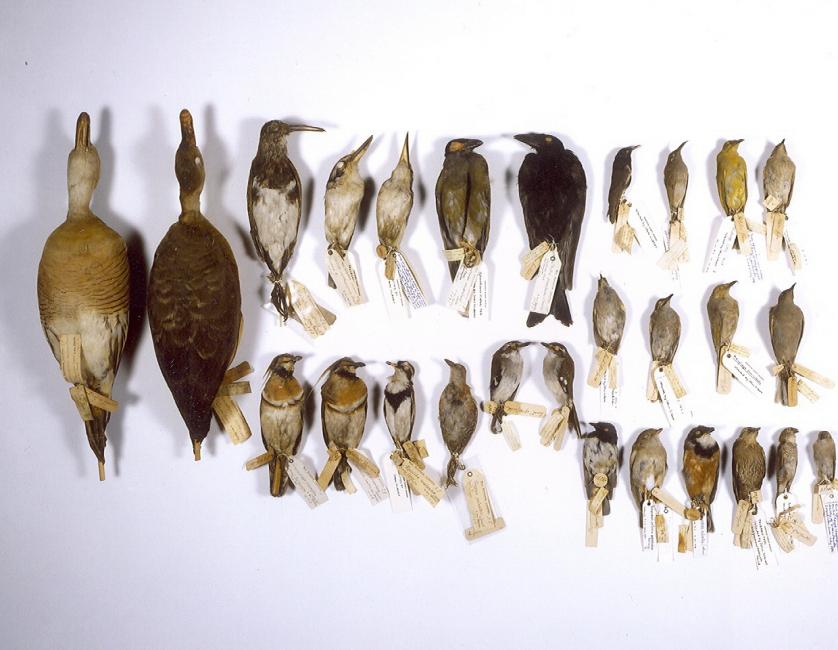
Ornithological specimens from the Port Essington Expedition, Northeast Australia (1844–1845)
“Bird specimens—now in National Museums Liverpool—which were collected by John Gilbert on the Leichhardt Expedition. Most of them face to one side or another, which is unusual for Gilbert’s specimens, but it meant he could pack more in a box than if they faced upwards. They are also less well-filled with cotton tow and flatter than usual. Right of center, facing each other and with white spots on the wings, are two specimens that were used by John Gould to describe the white-browed robin, a new species” (Clemency Fisher, personal correspondence with Heike Hartmann, 2014).
Courtesy of National Museums Liverpool. All rights reserved.
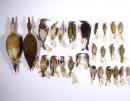
The birds collected on the Leichhardt Expedition, although small in number, are scientifically significant. Gilbert and Murphy’s specimens of the white-browed robin (Poecilodryas superciliosa) and the Queensland variant of the white-browed scrubwren (Sericornis frontalis laevigaster) are type specimens of previously unknown species. It is also of importance that several species have shown changes in distribution since they were seen or collected in 1844–1845.
According to Clemency Fisher, Curator of Vertebrate Zoology, National Museums Liverpool,
[t]he Gouldian finch is a good example for changes in distribution. In addition, another important discovery has been the answer to why there are multiple references in the literature and field guides to the possible existence in Northern Territory of the yellow honeyeater, Lichenostomus flavus. In fact this little bird only occurs in northern Queensland. The mistake can be traced to the labels on several of the Yellow Honeyeater specimens collected by Gilbert and Murphy from the Burdekin and Lynd Rivers of north Queensland, while they were on the Leichhardt Expedition—which they both referred to as the “Port Essington Expedition” (Port Essington was their destination). Ornithologists since then have taken birds labeled “Port Essington Expedition” to mean they are from the actual Port Essington, on the northern coast (Fisher 2014).
John Gilbert’s participation in the Port Essington Expedition was not only of importance to science. The Australian journalist and ornithologist Alec Chisholm tracked down Gilbert’s diary and used this as a source for his book Strange New World: The Adventures of John Gilbert and Ludwig Leichhardt, which perpetuated the image of Leichhardt as a German romantic lacking in mateship and pragmatism, while painting Gilbert in a positive light as everything Leichhardt was not. Strange New World had an immense influence on the perception of Leichhardt.
Further links and additional materials
This map shows the route of Leichhardt’s expedition to Port Essington; it includes topographic and geological notes marked with the date the party reached each location. Noteworthy events are also recorded. By John Arrowsmith (1790–1873), London, 1847. Courtesy of National Library of Australia, Canberra.
John Gould’s The Birds of Australia was published in seven volumes and a supplement between 1840 and 1848, and included 700 lithographs. The Birds of Australia, London: published by the author, 1848. Republished digitally by National Library of Australia, Canberra.
3. Letter detailing the circumstances of the death of Mr. John Gilbert
Another expedition member informed John Gould about the death of his assistant. “Letter detailing the circumstances of the death of Mr. John Gilbert,” written by John Roper (1822?–1895) to John Gould (1804–1881), published in: Proceedings of the Zoological Society of London, Vol. XIV, 79–80. London: R. and J. E. Taylor, 1846. The digital version is held at the Biodiversity Library as a contribution from the Natural History Museum Library, London.


